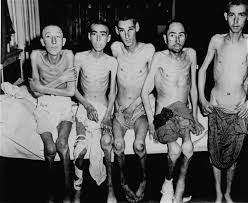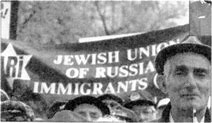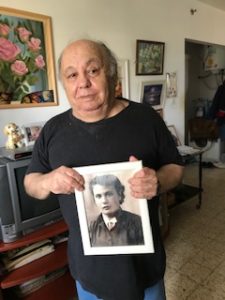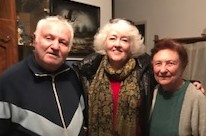It is 74 years since WWII ended and left survivors of those who were imprisoned, tortured  and displaced. They were from almost every part of Europe, but the majority were from the Russian speaking countries.
and displaced. They were from almost every part of Europe, but the majority were from the Russian speaking countries.
In the news we often see headlines about a large number of the Holocaust Survivors in Israel suffering in poverty. Is it so? What are the real numbers and if so, what is being done about it?
The term “elderly” refers to people age 65+. Between 1948-1951, 687,000 Holocaust Survivors immigrated to the State of Israel. Since 1990 one quarter of the immigrants have been from FSU (Former Soviet Union) and are 80+.
 In a 2013 report by the Adva Center, an Israeli think tank, 56% of Russian immigrants in 1992 were among the poorest 1/3rd of Israeli society, at risk or below the poverty line. By 2010 the figure had dropped to 38%.
In a 2013 report by the Adva Center, an Israeli think tank, 56% of Russian immigrants in 1992 were among the poorest 1/3rd of Israeli society, at risk or below the poverty line. By 2010 the figure had dropped to 38%.
In spite of this difficulty the immigration from FSU was considered to be a huge success. The younger Russian people have integrated into every area of Israeli society. It is only the elderly generation that was not able to make the transition with ease.
Population- immigration increase is tenfold since 1948:
1948 – 806,000
1949 – 1,000,000
1958 – 2,000,000
May, 2019 – 9,009,000
Elderly are 10% of the population since 1990 with a median life expectancy to be 84.5 years. From the late 1980’s to 90’s approximately 1,000,000 Soviet Jews moved to Israel. Their mass immigration increased Israel’s Jewish population by almost 20%. Of the elderly group 30% are Holocaust Survivors.
Aging population 80+ are expected to increase overall, reaching 1.66 million in 2035. That would be an increase of 77% between 2015 and 2035. (this includes all ethnicities)
Birth origin includes 23% of the elderly immigrated to Israel since 1990, the majority from FSU. Of these elderly 25% are living alone, with 2% of the total elderly population living in nursing care facilities.
According to the Israel Central Bureau of Statistics in January 2019 Holocaust Survivors in Israel number 212,000 with the majority over the age of 80. By 2025 it is estimated 102,000 will still be living, age 85+. This represents the loss of 9,000 from the year before.
In 2015 approximately 106,000 households of 65+ were living in poverty, representing 23% of that population. Transfer payments from other countries to Holocaust Survivors and pensions for elderly who were in the workforce help keep them from poverty level. Before those payments the poverty rate was 49.1%. Pensions make the difference between abject poverty and a basic living income.
Socially, in 2016, 33% of the elderly frequently say they felt lonely. Breaking it down further we have 25% of men and 40% of women expressing loneliness. It is noted loneliness increases with age.
Health status of the elderly naturally reduces when disabilities are involved. In 2016 approximately 14% of the elderly lived with limited mobility. This percentage rises with increase of age. Those seeing a physician, specialist or hospitalization for health issues was 93% in the previous year.
Services for the elderly can be divided into community services (in their homes or daycare) and institutional services in residences where they may live. In 2016 approximately 30% of the elderly were registered with the social service departments for assistance. (this includes various hours of caretakers in their home)
Among the elderly are the Russian immigrants of which a large number are Holocaust Survivors. About 45% of them have a higher education but their lack of language skills for Israel prevented them from entering the work force. This contributes to their tendency for a lower income household. If they live with family members then their lives are improved. However, some of the Survivors have no family left after the war.
The immigration of FSU Russians was a mass resettlement of families including the  advanced aged. Older immigrants are prone to retain their ethic and cultural characteristics and usually do not integrate into the new society. In addition, this migration split many of the families as some came to Israel and others remained in their home country.
advanced aged. Older immigrants are prone to retain their ethic and cultural characteristics and usually do not integrate into the new society. In addition, this migration split many of the families as some came to Israel and others remained in their home country.
Holocaust Survivors, after being immersed in the atheist culture of the USSR, 90% are non-religious and unfamiliar with their Jewishness. Therefore, they are less likely to identify with the Israeli culture and less motivated to learn Hebrew. Though often forced to emigrate to Israel due to economics they still often do not align themselves with Israel values and hang onto their Soviet culture.
In addition, with children or other family remaining in the ‘old country,’ their bonds are not broken and remain strong. Many times the separation of family is forced as not all family members are eligible to immigrate. In fact, many of the older Russian immigrants retain their old apartments in the FSU and split their time between the two countries. Only now, as they age, and are no longer physically able to travel are they resigning themselves to Israeli citizenship only.
Considering that many of the Russian immigrants/Holocaust Survivors arrived at an age where working was not possible, they receive a minimal social security benefit equal to approximately $500/month. They may be able to claim a Soviet pension (though some are denied) but that is usually between $50-$100/month.
Rental prices are high on private housing and there are limited public housing available for those with a low income. This problem can be solved if they have adult children with whom they can live or share with a roommate.
As they age and become infirm, unable to live alone, their options are limited. The government may provide a caretaker for 2 hours a day, 3-5 days a week. Holocaust Survivors can apply for an additional 10 hours/per week but the paperwork and denial rate is daunting. For any hours beyond this the Survivor must pay for a private caretaker.
The duties of a caretaker include basic cleaning, shopping, cooking meals, errands (pick up meds or pay bills) and assisting the elderly person to a doctor appointment. Considering between 6-10 hours a week are provided it is impossible to include all these things.
If a Survivor is able to secure 10 additional hours, resulting in up to 20 hours a week, much more can be accomplished. However, if the Survivor’s health requires more help, they must prove to the social services the need is legitimate. This could result in one caretaker in the morning, one caretaker in the afternoon and one caretaker in the early evening. The Survivor is then alone during the night.
It is possible to get a 24/7 caretaker, often a foreign worker, but it is not the norm. Therefore, the need for home care and assistance is very high. This is sometimes relieved through volunteers of various agencies or humanitarian aid organizations.
The other option is for the Survivor to enter a beit avot (independent or assisted living facility). The elderly apply for acceptance and if approved, pension check is accepted as payment for a room. They receive a small amount of spending money and enter into one of these homes. Many times they share a room with one or more roommates.
Social medicine in Israel ensures their medical needs are mostly met except for dental and eye care which is an additional cost. There are several levels of insurance which include more services. Though these services are available, many times visits to the clinic, doctor or hospital for procedures are dependent on both transportation and an advocate to accompany them. If they have family, they usually are not available as they are working. Again, volunteers from organizations are an important factor in assisting in this area.
Another challenge for the elderly Russian immigrants/Survivors is handling the government papers, utilities, benefits, language barriers, phone calls and disrespectful conduct at government offices. Once again, advocates who can speak both Hebrew and Russian (or other languages) are a great asset in these situations.
An observation by the volunteers of AHI we feel is obviously a result of emotional dysfunction within the Holocaust Survivor’s family. As small as the income is for the Survivor, they have a great desire to give what they can to children and grandchildren. Though they cannot afford to do so, they give money to their family members, shortchanging themselves for what they need. Even if it means they do not have money for medicine or food, they want to give.
As an organization that works with the Survivors to supply their needs and make their life easier, we understand the motivation behind it. Though we cannot truly comprehend the horror which the Survivors have endured we do see the resulting emotional scars.
Even in our visits, when we do renovations, give a gift, take them to the doctor, bring them a letter or just sit and have tea, they feel an obligation to give us something. We often walk away with candy, fruit or cookies. Though completely unnecessary, it is their way of making sure we return to them again.
 As a humanitarian aid group we are pleased to bring joy to the Holocaust Survivors, to relieve their loneliness. But it would not be right if we did not include physical assistance to the Survivors. In poverty, or not, loneliness is debilitating. It is our vision and desire to bring them relief in the physical sense and a wealth of unconditional love.
As a humanitarian aid group we are pleased to bring joy to the Holocaust Survivors, to relieve their loneliness. But it would not be right if we did not include physical assistance to the Survivors. In poverty, or not, loneliness is debilitating. It is our vision and desire to bring them relief in the physical sense and a wealth of unconditional love.
“…Faith by itself, if it is not accompanied by action, is dead” James 2:17
Sources:
- jdc.org.il/mashav
- 2016 Annual Report on Poverty and Social Gaps of the National Insurance institute of Israel, Research and Planning Administration
- Taub Center Staff, April 29, 2015
- State of the Nation Report 2014 by Prof. Haya Stier
- Transnational lifestyles among Russian Israelis: a follow-up study by Larissa Remennick

